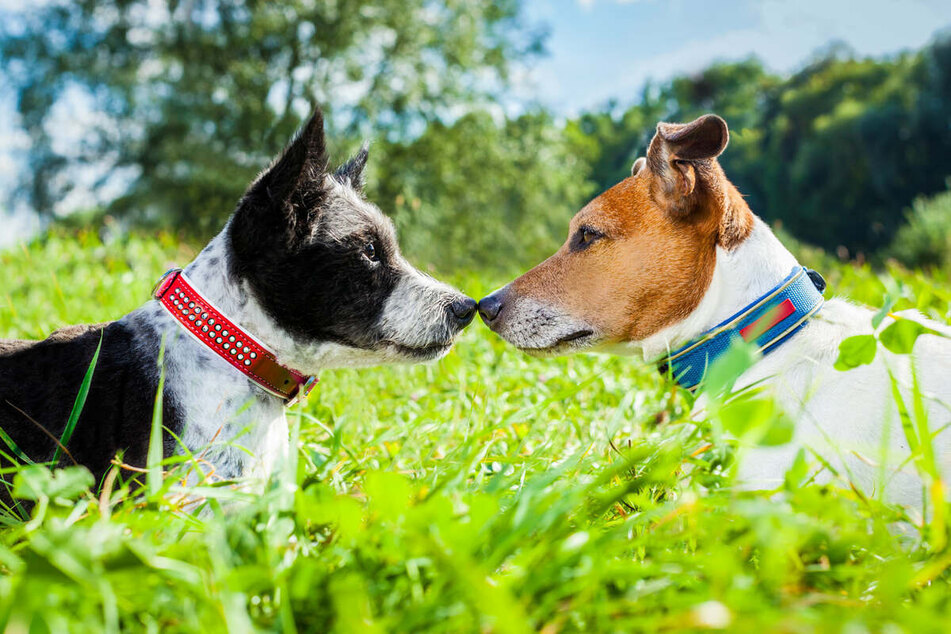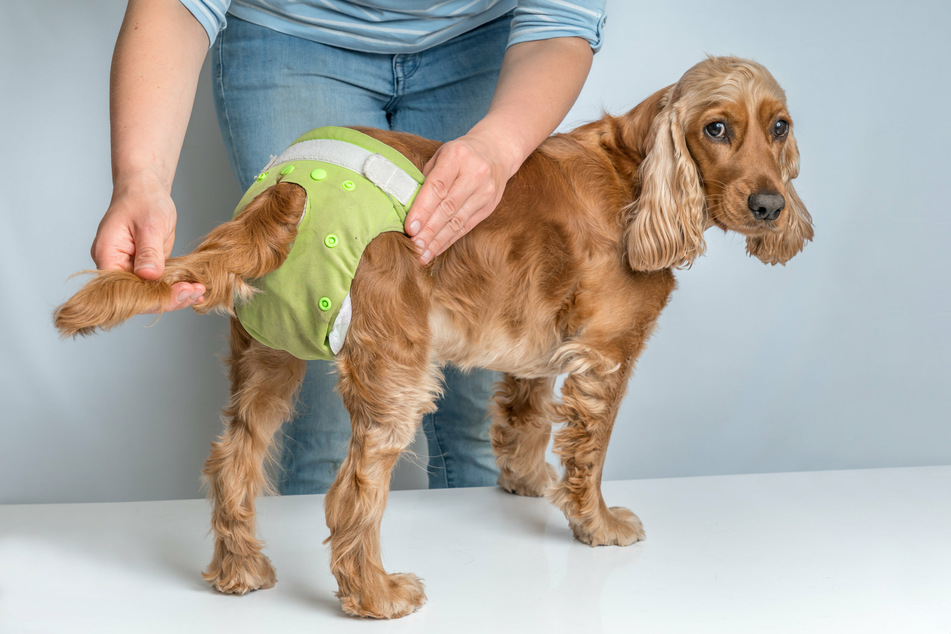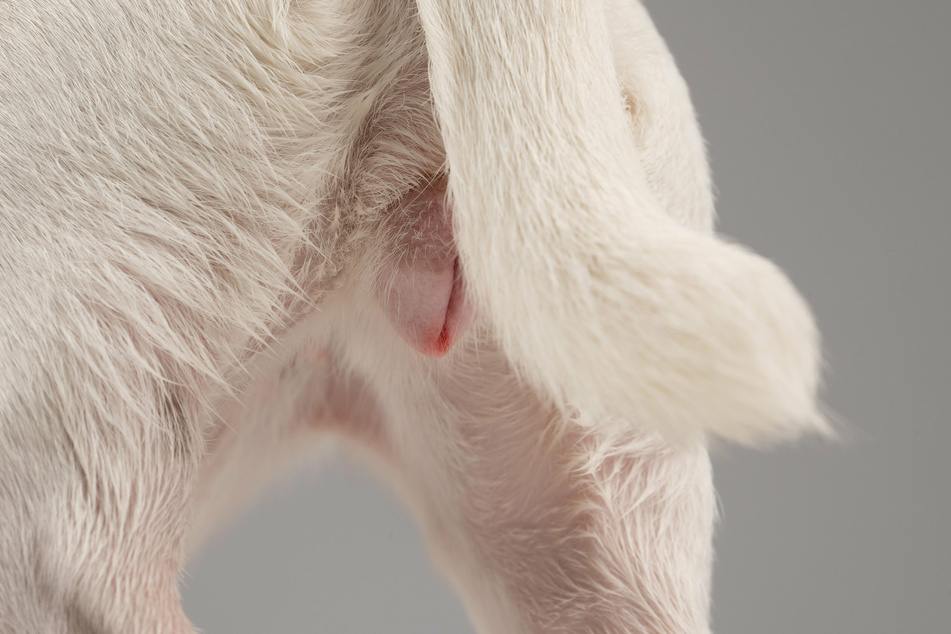No appetite, drops of blood, and male dogs in tow? These could be signs of a heat cycle. Female dogs often exhibit unusual behavior and show physical changes when they are in heat.
- Symptoms of Heat in Female Dogs
- The Heat Cycle in Female Dogs
- How Often Does a Female Dog Go into Heat?
- First Heat in Female Dogs
- How Long is a Female Dog in Heat?
- Is My Female Dog Pregnant Now That She is in Heat?
- Tips for Dealing with a Female Dog in Heat
- Is Your Female Dog Not Going into Heat? Possible Causes
- Should You Spay a Female Dog to Prevent Heat?
When a female dog is in heat, she is in the estrus phase. This means she has reached sexual maturity and is now in her fertile period, capable of becoming pregnant.
Unlike humans, this phase is accompanied by bleeding.
Therefore, if you want to avoid pregnancy, extra caution should be taken during this time.
In the following, you’ll learn about the signs that indicate your female dog is in heat and what you should consider on this topic.
Symptoms of Heat in Female Dogs
Certain behavioral patterns, as well as physical signs, can indicate that a female dog is in heat.
The most common symptoms include:
- Male dogs are more attracted to the female.
- Mild aggression towards male dogs in the first heat phase.
- Disobedience compared to usual behavior.
- Increased need for closeness and affection.
- Increased fatigue, but also heightened activity is possible.
- Reduced or increased appetite.
- Swollen vagina.
- Heat cycle.
During the fertile phase, the scent of the female dog also changes. While humans usually cannot perceive this change, male dogs, particularly through sniffing the anal region – as many glands are located here – can sense that she is in heat.

The Heat Cycle in Female Dogs
The cycle of female dogs consists of four phases, with actual heat occurring in two:
- Proestrus
- Estrus
- Diestrus
- Anestrus
A female dog is in heat during the first two phases, but she is only fertile during the second.
Since male dogs show increased interest in the first phase, and the transition to the second fertile phase is subtle and not easily detectable (except through a blood test), one should be attentive during the first phase to prevent male dogs from mating with the female.
How Often Does a Female Dog Go into Heat?
Unlike in cats, the frequency of a female dog going into heat is not determined by the season.
Typically, dogs go into heat twice a year, approximately every six to seven months.
Smaller breeds may go into heat slightly more frequently.

First Heat in Female Dogs
The timing of a female dog’s first heat depends on factors such as:
- Breed or size
- Health condition
- Age
Generally, female dogs become sexually mature and go into heat between six months and one year of age. Large breeds tend to go into heat later than smaller ones.
However, the first heat often occurs as a so-called silent heat, as external signs are often not noticeable. This can be problematic if pregnancy prevention is the goal; hence, caution is advised during the first year to avoid contact with male dogs and intervene if mating behavior is observed.
Do Female Dogs Change When They Are in Heat for the First Time?
The temperament of a female dog does not generally change when she goes into heat for the first time. However, during heat, many animals exhibit mild to significant behavioral changes (see symptoms), which normalize after the heat cycle.
How Long is a Female Dog in Heat?
As a guideline, the heat cycle in female dogs lasts about 15 days. However, the duration, similar to humans, is quite variable and can range from one week to a month, with the latter being less common and should be examined by a veterinarian, as hormonal imbalance could be the cause.

Is My Female Dog Pregnant Now That She is in Heat?
If the female dog develops larger nipples, loses milk, and exhibits other unusual behaviors such as nesting, there is no immediate need for concern that a cute litter of puppies is on the way. Some female dogs experience a false pregnancy after being in heat.
A visit to the veterinarian provides clarity.
Tips for Dealing with a Female Dog in Heat
Tips to avoid pregnancy:
During walks, it’s advisable not to let your female dog off the leash while she is in heat. The risk is too high that a male dog may mate with her, as females in heat are often less obedient, making it challenging to call them back if you encounter a male dog during a walk.
If you have an intact male dog at home alongside a female in heat, keep a close eye on them. If possible, spatially separate them for this time to prevent any mating attempts. Locking one of the dogs away for days is not recommended; separation is only advisable if the living situation allows both to move freely and participate in daily activities separately.
Tips for the emotional well-being of the female dog:
Heat can be stressful for the female dog, especially if she is being bothered by male dogs. Therefore, it is advisable to minimize contact with male dogs as much as possible. For example, if you usually go to a busy dog park, consider finding a quieter alternative during this time.
Tips for avoiding bloodstains in the living space:
Special diapers or pants for female dogs in heat can be purchased. It is essential that they fit well and securely but do not constrict the animal. The tail must be able to move freely.
Is Your Female Dog Not Going into Heat? Possible Causes
If a female dog’s heat cycle is absent, it may be due to illness or poor overall health. Even if a dog owner does everything right but the dog comes from poor living conditions or has been mistreated in the past, irreparable damage may have occurred.
If the female dog is not very old and quite large, it could also be related to her size – larger breeds often go into heat for the first time at around two years of age.
Should You Spay a Female Dog to Prevent Heat?
If you want to ensure that the female dog cannot become pregnant (sterilization) and prevent heat cycles in general, you can have the dog spayed. There are several pro arguments, such as the absence of bleeding and prevention of pregnancy, but there are also counterarguments, such as an unnatural hormonal cycle and associated problems like weight gain.
It is advisable to seek detailed advice from a veterinary practice to determine what is best for the dog, considering the advantages and risks.


